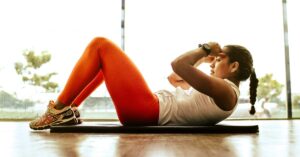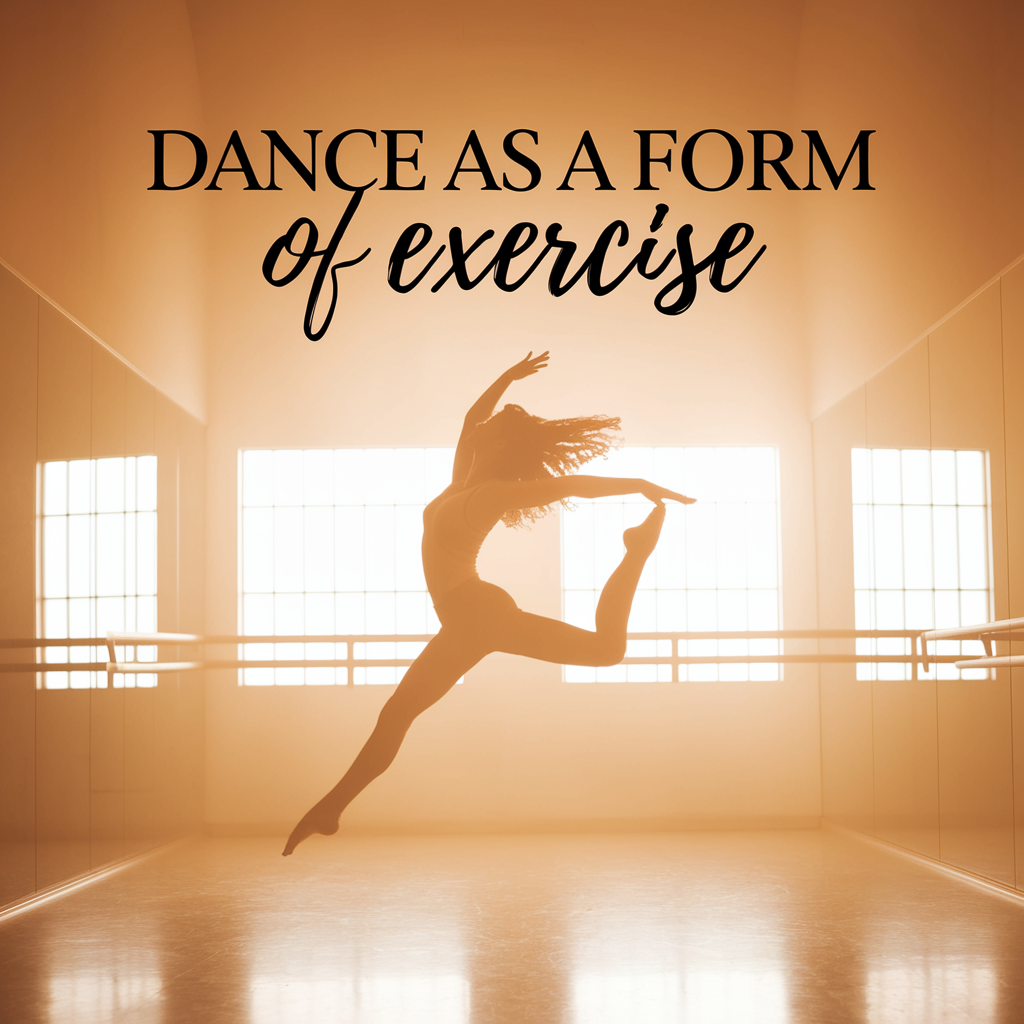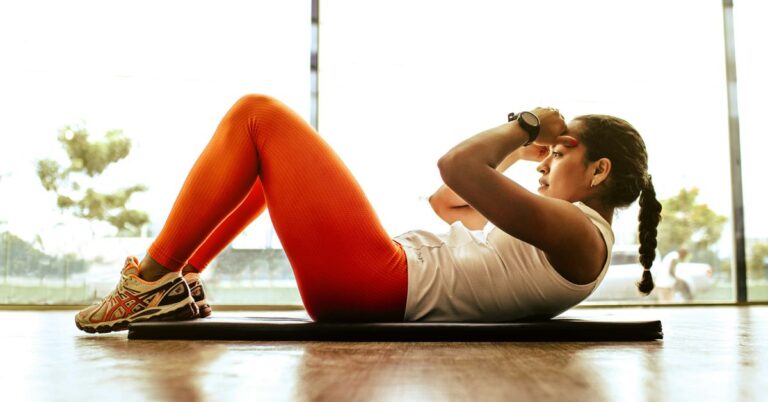Discovering the Joy of Dance as a Form of Exercise
Have you ever found yourself tapping your feet to a catchy tune, lost in the rhythm, and suddenly realized you were dancing? It’s an exhilarating feeling, isn’t it? Dance is a universal language that transcends boundaries, and beyond its artistic expression, it serves as a potent form of exercise. While many people view exercise as a chore, dance can transform it into a joyful experience. As someone who has spent countless hours on the sidelines of various dance floors—be it weddings, parties, or the occasional living room dance-off—I’ve come to appreciate how this vibrant activity can elevate not just our spirits but our overall health.
The Transformation of Dance into Exercise
Historically, dance has been an integral part of human culture. From ancient rituals to modern-day flash mobs, dance is embedded in our social fabric. Yet, it wasn’t until the rise of fitness trends in the late 20th century that dance began to be recognized explicitly as a form of exercise. Take Zumba, for instance. This high-energy dance workout that combines Latin and international music with dance moves has swept the globe, attracting millions of enthusiasts. According to the American Council on Exercise, a typical Zumba class can burn between 500 and 1000 calories. Now, that’s a compelling reason to shuffle your feet!
But why does dance resonate so deeply as a form of exercise? Perhaps it’s due to the fact that, unlike running on a treadmill or lifting weights, dance is inherently social and expressive. It provides a creative outlet that can invigorate the mind as much as the body. In my own experience, I recall joining a salsa class on a whim, thinking it would be a fun way to meet new people. Little did I know, I would be sweating bullets and laughing at my two left feet while learning to move like I was born to salsa. I left the class feeling not only physically energized but emotionally uplifted.
Benefits of Dance as Exercise
Engaging in dance as a form of exercise comes with a plethora of benefits. Let’s dive into some of the key advantages:
- Physical Fitness: Dance improves cardiovascular endurance, strength, flexibility, and balance. It’s a full-body workout that challenges multiple muscle groups.
- Mental Well-Being: The endorphins released during a dance session can help reduce stress and anxiety. It’s like a mini-vacation for your mind!
- Social Connections: Joining a dance class or group can foster community and friendships, which are vital to maintaining mental health.
- Creativity and Self-Expression: Dance allows individuals to express themselves creatively, contributing to a sense of identity and personal fulfillment.
- Accessibility: Dance can be adapted to various skill levels and can be practiced almost anywhere—at home, in a studio, or even outdoors.
It’s important to note that the joy of dance doesn’t come solely from the physical exertion; it’s about connecting with music, movement, and others. I remember a friend of mine—let’s call her Sarah—who had never considered herself athletic. She took a hip-hop dance class out of curiosity and discovered a side of herself she never knew existed. The combination of rhythm and laughter turned her apprehension into passion, and she has since become an avid dancer.
The Science Behind Dance and Exercise
Many studies have investigated the physiological effects of dance on the body. Research published in the Journal of Physical Activity & Health found that individuals who engage in dance regularly exhibit improved cardiovascular health and better muscle strength than those who prefer traditional exercise routines. Additionally, dance has been linked to enhanced cognitive function, particularly in older adults. The act of learning choreography and remembering steps stimulates the brain, keeping it agile.
One fascinating study from the University of Illinois suggested that dance is one of the best exercises for maintaining brain health. The researchers discovered that participants who engaged in dance showed significant improvements in memory and cognitive processing speed compared to those who performed more monotonous exercises. So, if you’re looking to keep your brain sharp, maybe it’s time to turn up the music and get moving!
Different Styles of Dance to Explore
With so many dance styles to choose from, it can be overwhelming. However, experimenting with various forms can be an exhilarating journey. Here are a few popular styles that are particularly effective as exercise:
- Ballet: Known for its grace and technique, ballet strengthens the core, enhances flexibility, and improves posture.
- Hip-Hop: This energetic style incorporates street dance and is excellent for cardiovascular fitness. Plus, it’s a great way to let loose and express yourself!
- Salsa: A lively Latin dance that combines rhythm and footwork. It’s social and burns plenty of calories while having fun.
- Zumba: A fusion of dance and aerobics, Zumba is designed to be a fun workout that feels like a party.
- Contemporary: A blend of various styles, contemporary dance encourages creativity and emotional expression while providing an excellent workout.
For those who might feel intimidated by traditional dance classes, there’s always the option of online tutorials. Platforms like YouTube have made it easier than ever to find dance lessons for any skill level, from beginner to advanced. I’ve often found myself attempting to mimic those skilled dancers, sometimes resulting in more laughter than grace. But hey, that’s part of the fun, right?
Overcoming Barriers to Dancing
Despite the numerous benefits, many individuals shy away from dance as a form of exercise due to various barriers. Whether it’s a fear of embarrassment, a lack of confidence, or simply not knowing where to start, these hurdles can deter even the most enthusiastic wannabe dancers. I’ll admit, I had my reservations before stepping into that salsa class. The thought of tripping over my own feet in front of others was daunting. However, it’s essential to remember that everyone starts somewhere, and most classes welcome beginners.
Here are a few tips to help overcome common barriers:
- Start Small: If the idea of a full class seems intimidating, consider starting with just a few online videos in the comfort of your home.
- Find a Friend: Bringing along a buddy can make the experience more enjoyable and less nerve-wracking.
- Focus on the Fun: Remember that dancing is about enjoyment, not perfection. Embrace the mistakes; they often lead to the best laughs!
- Choose Your Style: Experiment with different dance styles until you find one that resonates with you. There’s no right or wrong way to move.
Ultimately, the key is to approach dance with an open mind and a willingness to embrace the joy it brings. Let’s face it, nobody really cares if you miss a step—everyone is too busy enjoying themselves!
Incorporating Dance into Your Routine
So, how can you integrate dance into your daily life? It’s simpler than you might think. Here are some strategies to help you get your groove on:
- Create a Playlist: Compile your favorite upbeat songs and designate specific times during the week to dance it out. Just a few minutes can brighten your day.
- Join a Class: Look for local dance studios or community centers offering classes. You might discover a new passion and meet some fantastic people along the way.
- Dance with Family: Turn on some music during family gatherings or even just a quiet evening at home. Getting everyone involved can create lasting memories.
- Use Dance for Fitness: If you’re already going to the gym, try incorporating dance-based workouts like Zumba or dance cardio into your routine.
As I reflect on my own journey with dance, I can’t help but smile at the memories made on the dance floor—whether it was at a wedding where I awkwardly attempted the Electric Slide or a night out dancing until the early hours. Each moment has contributed to my appreciation of movement. Dance, in its many forms, reminds us to embrace our bodies and revel in the sheer joy of being alive.
The Future of Dance as Exercise
As health and wellness continue to evolve, it’s exciting to see how dance will play a role in our collective fitness journey. With the rise of virtual classes and social media challenges, dance is more accessible than ever before. Who knows? In a few years, there may be a global dance-off on the horizon, with everyone participating from their own living rooms—now that’s something I’d love to see!
Moreover, the world of dance is constantly evolving. New styles emerge, and traditional forms are reimagined, making it an ever-changing landscape. This fluidity invites us all to explore and engage in ways that resonate with our personal preferences. It’s not just about the exercise; it’s about finding joy in movement—something we all need in our lives.
So, whether you’re a seasoned dancer or someone who has never stepped foot on a dance floor, I encourage you to leap into this delightful world. Put on your favorite song, let go of your inhibitions, and dance like nobody’s watching. You might just find that the joy of dance becomes an integral part of your fitness journey—and who knows, you might even discover a hidden talent along the way!
Conclusion
The world of dance is a treasure trove of joy, creativity, and fitness. With myriad styles available and the ability to adapt to any skill level, it’s an inviting space for anyone willing to step outside their comfort zone. Dance challenges us physically while soothing our minds, reminding us that exercise doesn’t have to be a grind; it can be a celebration.
As we move forward, let’s embrace the power of dance as a form of exercise—because life is too short to sit still when there’s music playing. So, lace up those dancing shoes, flick on your favorite tunes, and let the rhythm guide you toward a healthier, happier you. And remember, it’s not about how well you dance; it’s about how much joy you find in every step.









